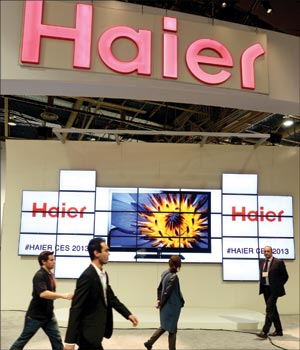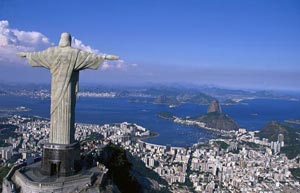PE investors trickling back
By ALFRED ROMANN in Hong Kong (China Daily) Updated: 2014-03-03 03:55
|
 |
|
Visitors walk by the Haier Group's booth at an international exhibition. US investment firm Kohlberg Kravis Roberts & Co paid $550 million for a 10 percent stake in Haier Group, China's largest manufacturer of white goods, in October. [Photo/AFP] |
However, the amounts earmarked for Asia remain a fraction of what goes to the United States. The US is the single largest market for PE groups, with 171 members in the PEI 300, Private Equity International's index of the largest PE firms. Asia and Europe have roughly the same number of funds in the ranking, with about 53 each.
Still, investors are again putting funds into Asia. But they are doing so with greater awareness of what can and cannot be done in the market and knowing that returns, once believed to be near mythical, are not easy to generate.
One example is the new KV Asia Capital fund, which raised $263 million as of last August to invest in medium-sized firms.
"KV Asia Capital has a 'bottoms-up' approach and we are seeing deals from across the Southeast Asian region, especially Singapore, Malaysia, Indonesia, Thailand and the Philippines," says Karam Butalia, the fund's executive chairman. "We do deals with the right mixture of quality, value and growth."
"Pan-Asian and global funds tend to be larger and hence target a larger deal size," says Butalia, who expects deals to ramp up through the year. "Our deal sizes and local cultural understanding results in our competing more with local Southeast Asian funds only."
Competition is also increasing in the region.
Li's China-ASEAN Investment Cooperation Fund invests primarily in ASEAN markets, some of which present more opportunities than developed markets.
The fund's first two investments were in last October and in January.
"Investment in Southeast Asia will still focus on infrastructure, resource and consumer products," says Li.
"As long as the economy is stable, there are good investment opportunities. But the challenges in this market remain, such as information asymmetry and foreign exchange control."
TPG provides a clear example of the learning process that funds have gone through. The TPG Newbridge Asia III fund that invested before 2005 reported internal rates of return of 31 percent.
But the TPG Asia V fund, which invested before 2012, returned just 2 percent because of failures at companies such as Li Ning Co Ltd, a Chinese sportswear firm, and PT Delta Dunia Makmur Tbk, an Indonesian mining group.
|
 |
 |
- NHTSA says finds no 'defect trend' in Tesla Model S sedans
- WTO rare earth ruling is unfair
- Amway says 2014 China sales may grow 8%
- President Xi in Europe: Forging deals, boosting business
- CNOOC releases 2013 sustainability report
- Local production by Chery Jaguar Land Rover this year
- Car lovers test their need for speed in BMW Mission 3
- China stocks close mixed Monday

















